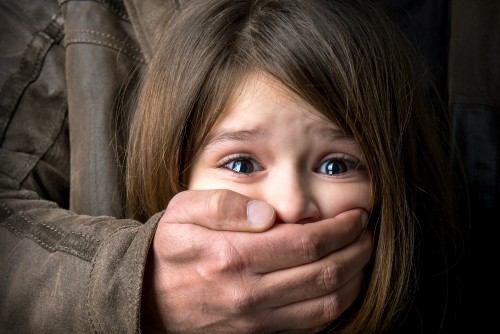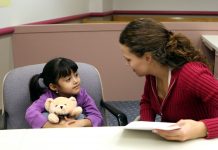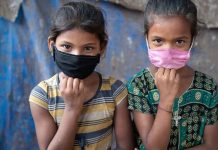This article is written by Manasvee Malviya, from the University of Petroleum and Energy studies. This article discusses forms of child abuse and its preventive measures.
Table of Contents
Introduction
Child abuse is an overwhelming global issue. Children are the most vulnerable section of society. There are several schemes, policies and legislation to prevent child abuse. Regardless, the actions taken by the nation, children are still exposed and abused by society. Child abuse is associated with poverty, domestic violence, illiteracy, etc. Child abuse can be directly linked with socio-economic conditions. The world is making significant progress in preventing child abuse but few countries like India are struggling to implement the policies and deal with child abuse because of the socio-economic conditions of the population. UN Convention of Rights of a Child, 1898 is the main entrustment for governing the rights of children worldwide. This article will discuss all forms of child abuse in India and the rarest form of child abuse witnessed by the world along with the preventive measures.
Child abuse – meaning and scope
In India, children face problems like child labour, early marriage, domestic violence, abuse at home or other places, sexual violence, trafficking and online violence. In 1992 India ratified the UN convention on the rights of the child. The UN convention of the rights of a child defines a child as every person below the age of 18 years. The World Health Organization defines child abuse as a violation of the human rights of a child. Child abuse can also be defined as an act of violation or negligence on the part of an individual either adult or child which threatens the life of the child or violates the basic needs. It impacts the development and affects the health and well being of the child. Children’s rights can be violated anywhere, home, school, playgrounds, workplaces and even online. Exploitation and violation of the rights of the child can have an everlasting impact while affecting the development of the child.
Government and non-government organisation have addressed the problem of child abuse but have lacked to implement it. For eradicating child abuse from its roots, the first and foremost step is to deal with the problems and upliftment of socially-economically weaker sections of society.
Legal framework for the protection of child rights
Juvenile Justice (Care and Protection of Children) Act, 2015
Juvenile Justice (Care and Protection of Children) Act, 2000 was replaced by the Juvenile Justice (Care and Protection of Children) Act, 2015 and came into force on January 15, 2016. The act lays down procedural safeguards for children in conflict with the law and deals with two categories of children first, who are in conflict with the law and second who need care and protection. Chapter V of the act establishes a child welfare committee (CWC) in every district, also defines the role and responsibilities of CWC. Chapter VI lays down provisions related to children in need of care and protection. Chapter IX deals with certain offences against children including cruelty, selling children or offering narcotic substances to children. And section 75 deals with punishments for offences against children.
National Commission for Protection of Child Rights (NCPCR)
In 2007, the Commission for Protection of Child Rights Act, 2005 constituted a statutory body the National Commission for Protection of Child Rights. The Ministry of Women & Child Development has administrative control over NCPCR. The commission was set up to protect, promote and defend child rights in India and to ensure that rights of child rights are consistent with the UN Convention of rights of the child and the Constitution of India.
Protection of Children from Sexual Offences (POCSO) Act, 2012
The POCSO Act, 2012 deals with provisions related to protecting children from sexual assault, sexual harassment, and pornography. Further, this act establishes special courts for the trial of such offences. The act safeguards the interest of the child at every stage of judicial proceedings.
Forms of child abuse
Child abuse can be categorized into four types:
Physical abuse
Physical abuse refers to an act which results likely to cause physical harm from an interaction. It is an intentional use of physical force against the child to harm him. Thus, it is an injury caused by a physical act. Even if the injury doesn’t occur the act is considered to be physical abuse and it is controlled by the person with responsibilities, power and trust. The injury must be the result of:
- Beating, slapping or pinching;
- Punishments like excessive running or exercise, burning hands, tying, leaving in undignified posture or any severe physical punishment; and
- Bullying.
Signs of physical abuse- bruises, marks, wearing inappropriate clothing like wearing a full sleeves T-shirt in the summer season, frightened from a person, resistance to going to a particular place.
Sexual abuse
Sexual abuse refers to the involvement of a child in some sexual activity that is not understood by the child. Where a child is not able to comprehend, have no understanding about the act by another person or give his consent. It is between a child and an adult, the adult being a person in power or authority. Sexual abuse can occur even if the child is not touched. Sexual abuse can be divided into two parts,
- Contact: when a child is touched in a sexual manner, intercourse, rape, forced to touch genital or sexual exploitation.
- Non- contact: when a child is exposed to pornography, virtual sex, filthy remark, obscene comments or voyeurism.
Signs of sexual abuse- the behaviour of the child- taking interest in things which are not appropriate for the age or very aggressive behaviour; physical signs such as marks on the body, bruises, swelling, problem in walking or sitting, etc
Emotional abuse
This type of abuse faces major challenges when it comes to evidence, it is extremely difficult to prove. It can be defined as the failure of the person responsible to provide a supportive and appropriate environment and it has effects on emotional health. Emotional abuse can be identified in every form of abuse as it hampers the health, well being and development of a child. Emotional abuses take place in the following ways:
- Shouting at children;
- Giving silent treatment;
- Threatening, emotional blackmail; and
- No affirmation or love.
Signs of emotional abuse – antisocial, extreme behaviour, emotionally distant, fear, anxiety, etc.
Neglect
This type of abuse affects the child in all aspects. It refers to the act of omission on the part of the person responsible to provide a child with basic necessity, safe living conditions, shelter according to the resources available to the person who is responsible/ caregiver. Neglect takes place when the caregiver fails to:
- Protect from any harm;
- Monitor progress, bruises( if any), behaviour; and
- Provide needed attention and care.
Signs of neglect-child not disciplined, bad language, disruptive behaviour, unhygienic, etc.
A rare form of child abuse
Insertion of needles
Insertion of a sewing needle is one of the rarest form of child abuse reported. Insertion of sewing needle into the child’s body through the skin or natural orifices is one the rarest form of child abuse. In some regions and communities of the world, it is linked with cultural practice. There have been reports of insertion of needles to different parts of the victim’s body such as the chest, hand, heads, feet, oral capacity, rectum and abdomen from around the world. The cases of suspected child abuse by needle insertion into the body of a child and it is supported by an X-ray of the whole body and a computerized tomography scan(CT scan).
A 3-month-old boy was admitted with a history of multiple small eruptions over the abdomen, skull and limbs which was followed by extrusion of sharp needle-like objects from the abdomen, skull and limbs. 2 years ago, a similar case was noticed, a year old child died because of the same cause. He was the sibling of a 3-month-old child. The parents had no knowledge of such an occurrence. Primarily there were no signs of it, the child looked well and at normal temperature. The detailed medical examination revealed scars of needle insertion on the abdomen and the limbs whereas the CT scan revealed the insertion of foreign bodies into the child. After the medical care, the child was discharged under satisfactory conditions but it left a strong suspicion of child abuse. In the case of child abuse by insertion of needles, it is quite difficult to find the culprit because of the child’s limited expressibility.
Fabricated or induced illness
In 2001 the royal college of Paediatrics and child health (RCPCH) introduced a rare form of child abuse- fabricated and induced illness. This form of child abuse occurs when a caregiver mispresents the child’s illness either by fabricated or produce symptoms and then presenting the child for medical care where the caregiver disclaims the knowledge of the cause of such illness or problem. This kind of child abuse is perpetrated by those who are responsible to take care of the child i.e., the mother(mostly). It is slightly difficult to detect and doctors play the most significant role in detecting such forms of abuse.
Child protection – responsibility
Parents are primarily responsible to care for and provide protection to their child. Even if the parents are not able to provide care and protection a child must not suffer. Therefore, the issue of child abuse and protection is dealt with by the government.
Role of Government
Government plays a crucial role when it comes to child protection. India has ratified the UN Convention Rights of Children and has accepted the obligations. The government has enacted various policies, schemes and acts for the development and protection of children. Though the government has implemented several policies and schemes, there is still a gap between the implementation and the outcome. For example, the Juvenile Justice (Care and Protection) Act, 2000, which was amended in 2006 provided for the protection and care for children in contact with the law and those who need it. Further, in 2007 National Commission for Protection of Child Rights, CHILDLINE number 1098 – a telephonic helpline number to report child abuse, issues related to the sexual offence are dealt with under the POSCO Act.
Role of Non-government organizations (NGO)
Many NGOs are working 24×7 for the prevention of child abuse and promoting child welfare and child protection. Due to the large number of children exposed to the violations, sufferings and exploitations, NGOs and governments have to work together for welfare. Various policies must be implemented by the government that can help NGOs to work for child welfare. Especially related to the health, education, prevention of child abuse and development of children.
Role of corporate sectors, religious institutions and professionals
The professionals, corporate sectors and religious institutions have a strong voice and influence on society. They have the power to break certain stereotypes, traditions and customs which violates the rights of the child and leads to child abuse. Professionals, people working in the corporate sectors and religious institutions have to promote social changes as may be necessary for the society, for the best interest of the child.
Ways towards prevention
Every child can’t be immuned against child abuse however it can be prevented. Given the child population, particularly among the underprivileged urban and rural communities, socio-economic constraint and lack of a well-developed system for child protection. Hence, it is important to take all primary measures to prevent child abuse. Following preventive measures can be considered:
- Educating children about the sexual threats and advances, differentiating between a good touch and bad touch.
- Regularly communicate with children. Communication must be constant and friendly.
- Donating money to the NGOs, as are working endlessly to prevent every form of child abuse. Also, they conduct pan-India programmes to educate children, parents and communities about sexual abuse and physical abuse.
- Reporting incidents of child abuse either to the police or to an online system, online reports are dealt with by the National Commission for protection of child rights.
- Creating awareness about child’s right in society.
- Doctors are to be trained to understand the complexity and help to collect evidence while examining the child.
- Creating a safe space for children in the community. Safe space refers to the place where a child feels protected and secured.
Steps to be taken to help a child in need
Emergency situation
When a child is at serious risk or a crime has already been committed. In such an emergency,
- First, contact the parents of the child only when not caused by them.
- Second, contact the agencies that can support the child and parents. Like, police, Childhelp line, NGOs, child welfare committee or district child protection unit.
- Third, hand over the child to a responsible person. If needed, provide emergency support such as food, shelter, clothes, medical expenses, etc.
- Fourth, help to investigate authorities by providing evidence(if any) against child abuse.
- And lastly, must ensure that the name of the child is not disclosed.
Non-emergency situation
Preventing child abuse doesn’t mean taking extreme measures. There might be situations where the child is not at extreme risk but few signs of child abuse can be noticed. In such situations, a person can,
- Personally talking to the child: it is not at all easy to get involved and one must be careful. But at the early stages of abuse, you can provide a listening ear, help, explaining what is not correct and giving relevant information.
- If a person can’t help personally, they can look for community support like childline (1908).
- Also, the district child protection unit, and the child welfare officer at the police station can be contacted.
Conclusion
Child abuse is the biggest stigma attached to society. A child can be physically, sexually and emotionally abused. Any form of abuse can impact the mental health of a child. Progress has been made in generating social awareness and educating about the child’s right but more is needed to be done.
References
- https://www.pure.ed.ac.uk/ws/portalfiles/portal/12941026/K201118.pdf
- https://www.savethechildren.in/child-protection/understanding-child-abuse-and-importance-of-child-protection/
LawSikho has created a telegram group for exchanging legal knowledge, referrals, and various opportunities. You can click on this link and join:
 Serato DJ Crack 2025Serato DJ PRO Crack
Serato DJ Crack 2025Serato DJ PRO Crack










 Allow notifications
Allow notifications



